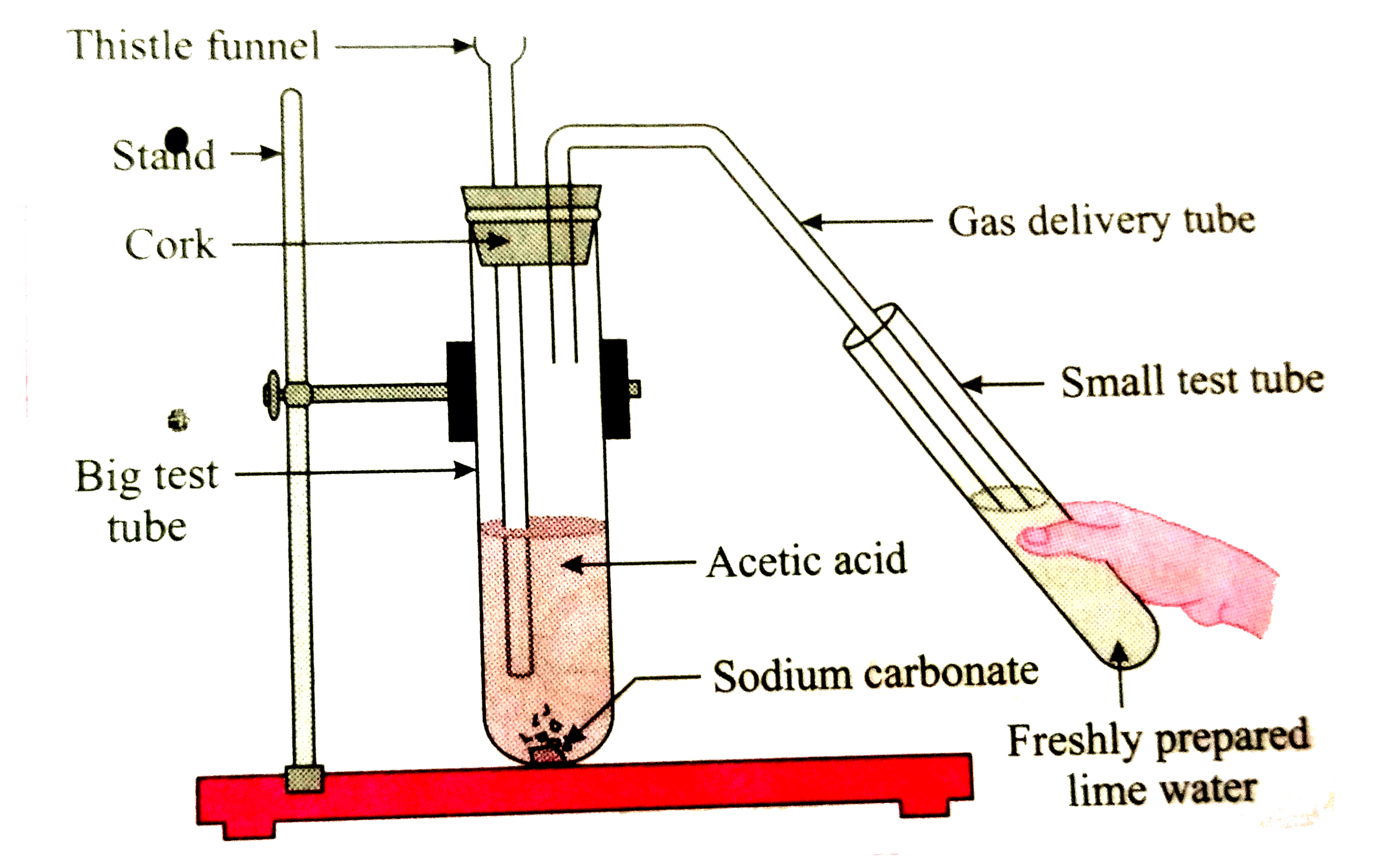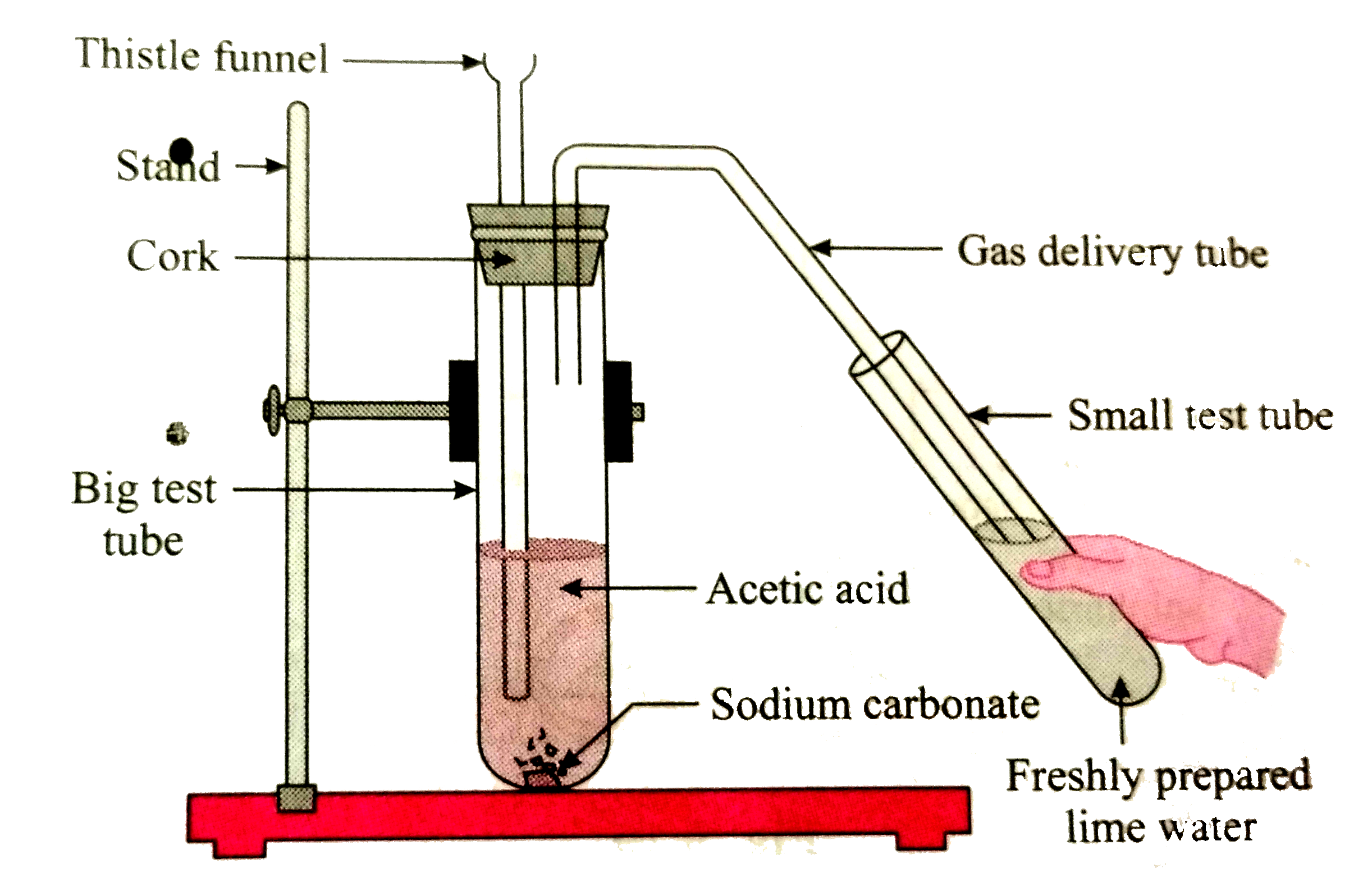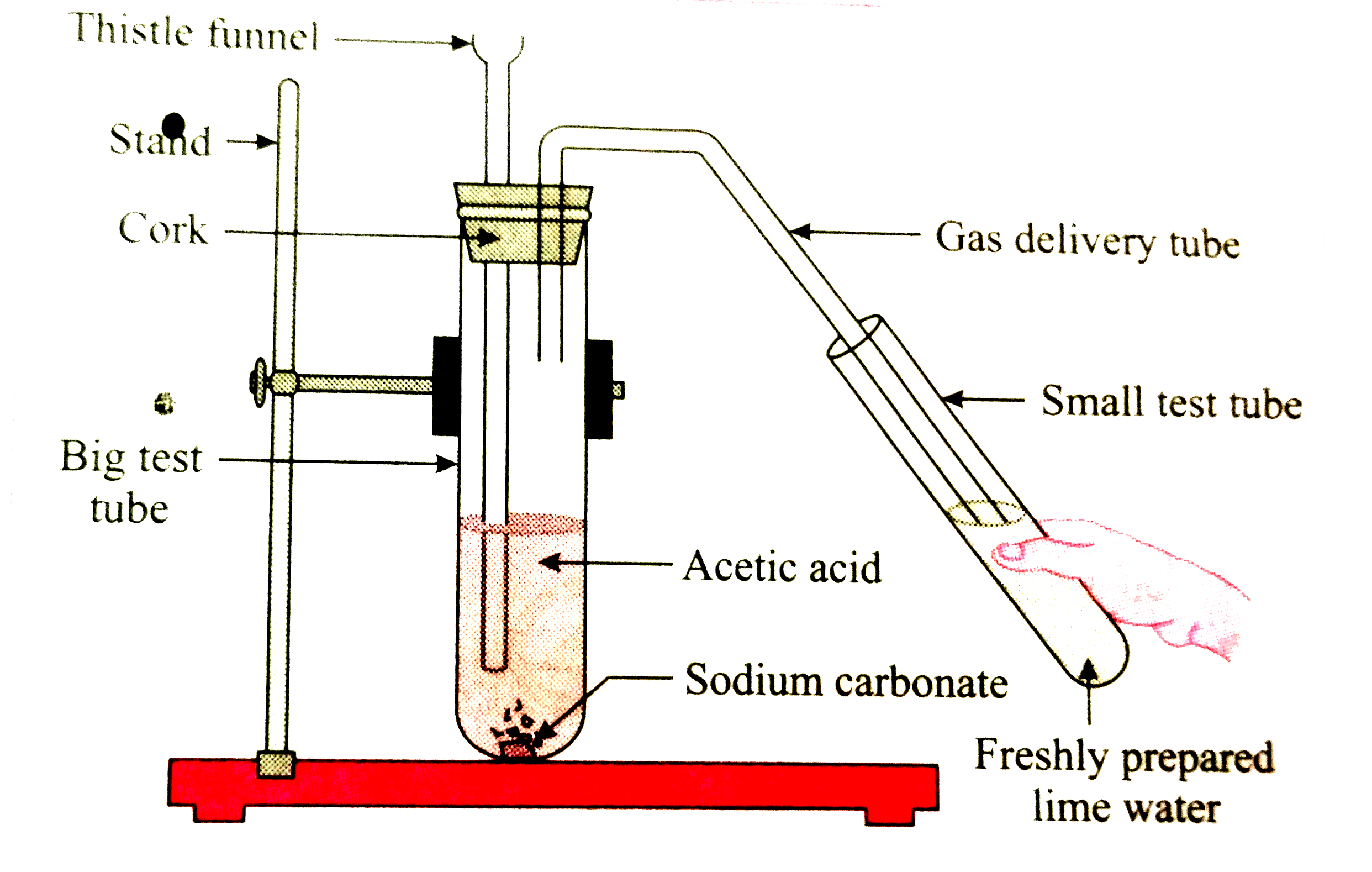About 10 mL water is taken in a test tube. To this nearly 10 mL of acetic aciid are added.
which out of the following will be the correct observation?

The correct observation will be in tube (D) .Actually acetic acid and water are both liquids and are miscible in all proportions. Therefore, the liquid mixture will be homogeneous.
Topper's Solved these Questions
- CARBON AND ITS COMPOUNDSBOOK - DINESH PUBLICATIONCHAPTER - CARBON AND ITS COMPOUNDSEXERCISE - NCERT In Text Problems
13 Videos
- CARBON AND ITS COMPOUNDSBOOK - DINESH PUBLICATIONCHAPTER - CARBON AND ITS COMPOUNDSEXERCISE - NCERT END EXERCISE
15 Videos
- ACIDS, BASES AND SALTS BOOK - DINESH PUBLICATIONCHAPTER - ACIDS, BASES AND SALTS EXERCISE - LAQs LONG ANSWER QUESTIONS
6 Videos
- CHEMICAL REACTIONS AND EQUATIONS BOOK - DINESH PUBLICATIONCHAPTER - CHEMICAL REACTIONS AND EQUATIONS EXERCISE - Multiple Choice Questions
18 Videos
Similar Questions
Knowledge Check
A small amount of copper oxide is taken in a test tube and dilute acid is added to it with stirring. Which colour will be obtained in the test tube ?
ABlue-greenBPinkCBlackDColourlessA student takes about 2 mL ethanoic acid in a dry test tube and adds a pinch of sodium carbonate to it. What will he observe ?
AA colourless and odourless gas evolves which burns with pop sound.BA colourless and odourless gas evolves with a brisk effervescence.CA brown coloured gas with foul smell evolves with a brisk effervescence.DA brown coloured gas with foul smell evolves which burns with pop sound.
Three test tubes marked A, B and C are taken. In test tube A copper sulphate solution and iron are added. In test tube B, copper sulphate solution and zinc are added. In test tube C, iron sulphate solution and copper are added. In which test tube will the experimenter observe change and why?
View SolutionApparatus: Big test tube, small test tube, bent gas delivery tube, rubber cork, thistle funnel, stand, etc.
Chemical : Acetic acid, sodium carbonate power, freshly prepared lime water.
Procedure : Arrange the apparatus as shown in figure. Plance sodium carbonate powder in the big test tube. Pour 10 ml acetic acid through the thistle funnel. Observe the changes taking place in the two test tubes.

What is the colour change in the lime water? Write the related equation.
View Solution100 mL of 0.1 HCl is taken in a beaker and to it 100 mL of 0.1 M NaOH is added in steps of 2ml and the pH is continuously measured . Which of the following graphs correctly depicts the change in pH
View SolutionApparatus: Big test tube, small test tube, bent gas delivery tube, rubber cork, thistle funnel, stand, etc.
Chemical : Acetic acid, sodium carbonate power, freshly prepared lime water.
Procedure : Arrange the apparatus as shown in figure. Plance sodium carbonate powder in the big test tube. Pour 10 ml acetic acid through the thistle funnel. Observe the changes taking place in the two test tubes.

Which gas does come out as effervescence in the big test tube ?
View SolutionApparatus: Big test tube, small test tube, bent gas delivery tube, rubber cork, thistle funnel, stand, etc.
Chemical : Acetic acid, sodium carbonate power, freshly prepared lime water.
Procedure : Arrange the apparatus as shown in figure. Plance sodium carbonate powder in the big test tube. Pour 10 ml acetic acid through the thistle funnel. Observe the changes taking place in the two test tubes.

Why are bubbles seen in the small test tube ?
View SolutionEqual lengths of Mg ribbon are taken in test tubes A and B. Hydrochloric acid is added to test tube A. While acetic acid is added to test tube B. In which case the reaction would occur more vigorously and why? Write the chemical equations for reactions in test tube A and B.
View Solution
